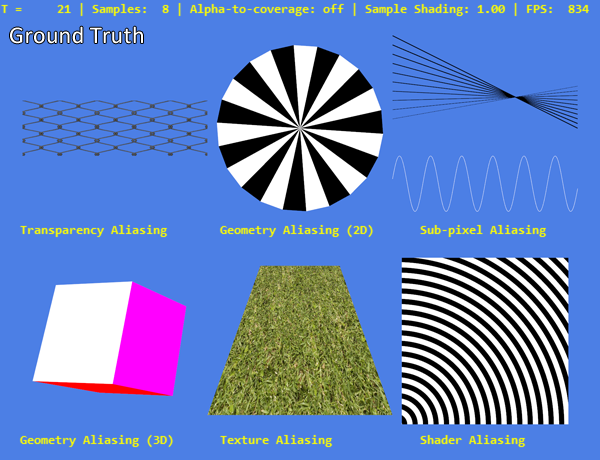Analytical AA Comparison
Figure 12 shows a comparison between the results produced by FXAA, SMAA1x and the ground truth, no AA, 4xMSAA and 4xSGSAAA images from the previous comparison.

Note that, unlike MSAA, these analytical methods do not care whether aliasing artefacts are caused by geometry, transparency or even shader evaluation. All edges are treated equally. Sadly, this also applies to the edges of the on-screen text, though the distortion is smaller for SMAA1x than it is for FXAA.
Both methods fail to anti-alias the sub-pixel case, however, they deal with this failure differently: while SMAA1x simply chooses not to affect the individual white pixels of the sine wave at all, FXAA blends them with their surroundings. Which handling is more desirable depends on the context and individual preferences.
More objectively, it can be said that SMAA1x clearly handles some line angles in the 2D geometry test and the curves of the shader aliasing example better than FXAA, producing a smoother result which is more aesthetically pleasing and closer to the ground truth. This is caused by a more involved edge reconstruction and blending step, the details of which are explained in the 2012 SMAA paper by Jimenez et alia [4].
